|
Attis
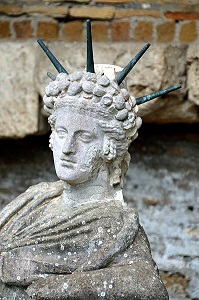
Aliases: Atys, Attin, Papas
Location: Asia Minor (Turkey), Greece, Rome
Cities: Dindymon, Ostia, Herculaneum
Estimated Date: 1250s B.C. - 400s A.D.
He is a shepherd
Attis was a shepherd, just as Dumuzi and Adonis were. In works of art he was portrayed as a shepherd with a flute and staff.
He is conceived by a tree
His mother became pregnant from an almond or pomegranate tree, similar to how Adonis was born from a tree.

Attis collects a pinecone from beneath a sacred tree
He is killed under a tree
He died under a tree or was changed into to a fir tree, similar to how Dumuzi was attacked by demons while under the apple tree.
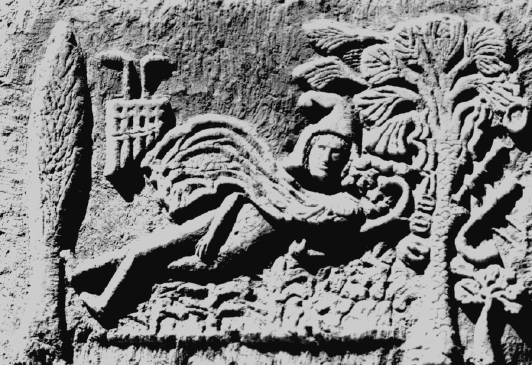
He rises from the dead on Easter
He was raised from the dead during the festivals of the vernal equinox (Easter).
Crosses and crucifixes were common religious symbols in Asia Minor
A Hittite cylinder seal found in Asia Minor and dated to 1380 B.C. shows the cross being used as a solar symbol and linked to agriculture. Another Hittite cylinder seal found in Asia Minor and dated to 2,000 B.C. portrays a priest using a crucifix either to greet an angel or protect against a knife-wielding demon.
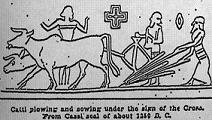 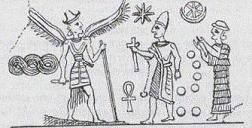
Hittite Seals dated between 2,000 and 1380 B.C.
He is worshipped using a sacramental tree pole
Attis is portrayed on a tree pole with a head and body but no feet being set up at an altar. These cult objects were most likely identical to the Asherah tree-poles referred to in Isaiah and Jeremiah large trees carved into idols of gods.
“You shall not make yourself a carved image or any likeness of anything in heaven above or on earth beneath or in the waters under the earth.”
“You must not plant a sacred pole [asherim] of any wood whatsoever beside the altar which you erect for Yahweh your God.”
Half of the wood he burns in the fire; over it he prepares his meal, he roasts his meat and eats his fill. He also warms himself and says, "Ah! I am warm; I see the fire." From the rest he makes a god, his idol; he bows down to it and worships. He prays to it and says, "Save me! You are my god!" They know nothing, they understand nothing; their eyes are plastered over so they cannot see, and their minds closed so they cannot understand. No one stops to think, no one has the knowledge or understanding to say, "Half of it I used for fuel; I even baked bread over its coals, I roasted meat and I ate. Shall I make a detestable thing from what is left? Shall I bow down to a block of wood?" Such a person feeds on ashes; a deluded heart misleads him; he cannot save himself, or say, "Is not this thing in my right hand a lie?"
His mother is associated with the serpent and lion
Cybele, the Great Mother of Attis, is often portrayed in ancient art with serpents or lions.
He is worshipped in a mystery cult
Attis is equated with Iasion, the consort of Cybele, who are both worshipped in Samothrake mystery cults in Phrygia. In Rome, Cybele was known as Magna Mater.
They said that one Theodorus played the part of the Herald, Pulytion that of the Torch-bearer, and Alcibiades that of the High Priest, and that the rest of his companions were there in the rôle of initiates, and were dubbed Mystae.
Salvation is attained through his resurrection
According to the fourth century apologist Firmicus Maternus, the celebrants of Cybele’s mystery cult achieved salvation through the resurrection of Attis.
"When they are satisfied with their fictitious grief a light is brought in, and the priest, having anointed their lips, whispers, 'Be of good cheer, you of the mystery. Your god is saved; for us also there shall be salvation from ills.'"
–Firmicus Maternus
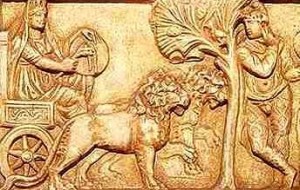
Cybele and Attis
Next God: Dionysus
The Dying-and-Rising Gods
Leave Comments Here
|

